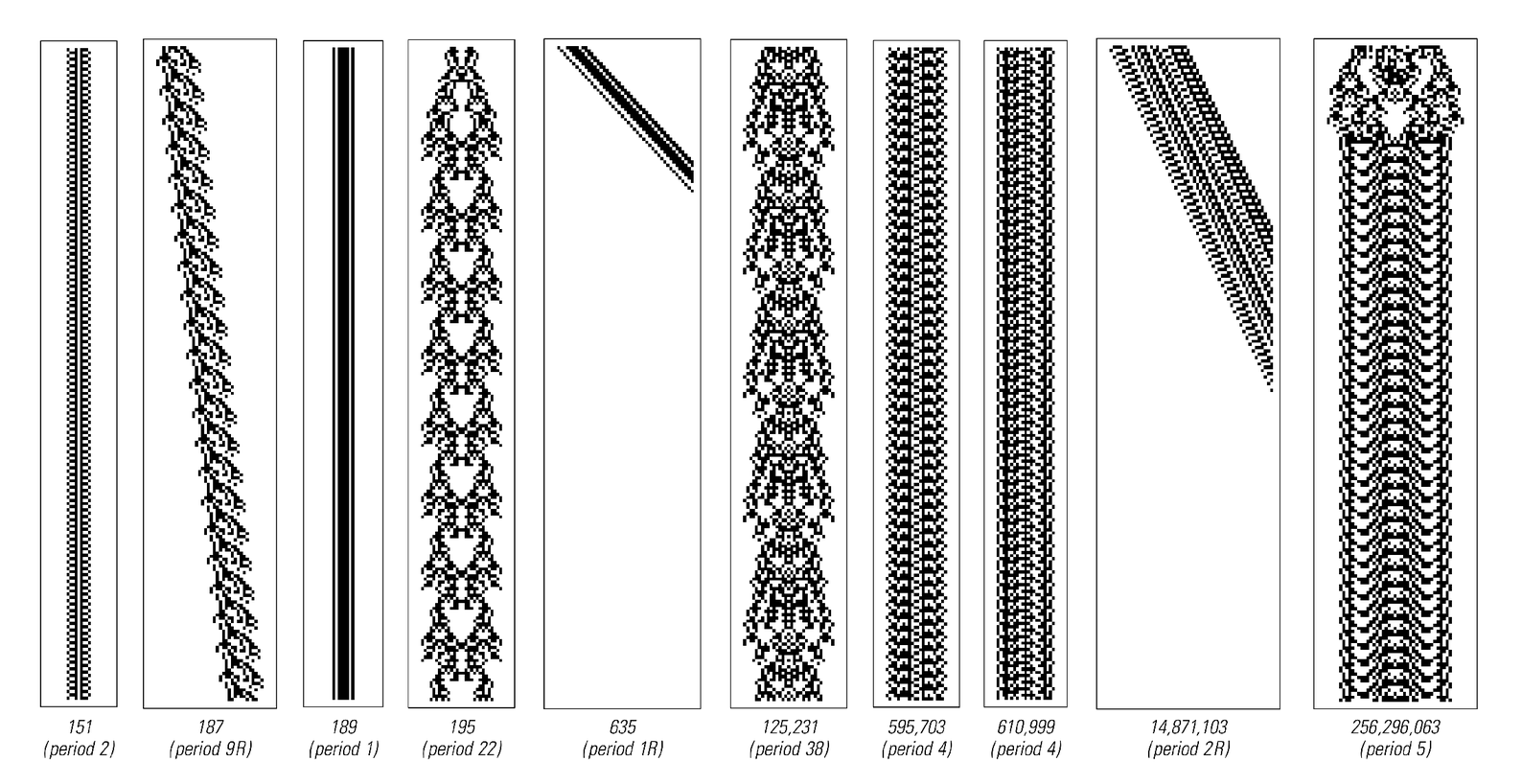So just what set of structures does the code 20 cellular automaton ultimately support? There seems to be no easy way to tell, but the picture below shows all the structures that I found by explicitly looking at evolution from the first twenty-five billion possible initial conditions.
Are other structures possible? The largest structure in the picture below starts from a block that is 30 cells wide. And with the more than ten billion blocks between 30 and 34 cells wide, no new structures at all appear. Yet in fact other structures are possible. And the way to tell this is that for small repetition periods there is a systematic procedure that allows one to find absolutely all structures with a given period.
The picture on the facing page shows the results of using this procedure for repetition periods up to 15. And for all repetition periods up to 10—with the exception of 7—at least one fixed or moving structure ultimately turns out to exist. Often, however, the smallest structures for a given period are quite large, so that for example in the case of period 6 the smallest possible structure is 64 cells wide.

Persistent structures found by testing the first twenty-five billion possible initial conditions for the code 20 cellular automaton shown on the previous page. Note that reflected versions of the structures shown are also possible. The base 2 digit sequences of the numbers given correspond to the initial conditions in each case, as on the previous page.